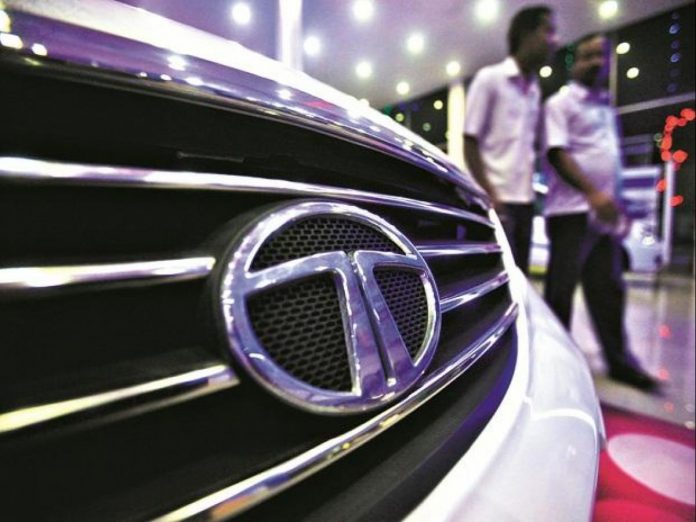
This article has been written by Tejas Geetey, pursuing the Diploma in Business Laws for In-House Counsels from LawSikho.
Table of Contents
Introduction
Promotion of product or service is done through the process of marketing. Promotion can be related to products features or qualities which attract potential consumers to buy or avail of that product or service. In the process of promoting the product, business enterprises sometimes cross the line by presenting the product through fake or misleading advertisements. A similar instance had happened in the matter of TATA Motors, whereby it was ordered to pay compensation to the Pradipta Kundu (hereinafter referred to as the “complainant”) for misleading advertisement of its products.
The article aims to provide an overview of regulations on fake and misleading advertisements by manufacturers and sellers. Though the given matter was filed when the Consumer Protection Act 1986 was in force which has been replaced by the Consumer Protection Act, 2019, the matter is provided as a reference to identify and take action against false & misleading advertisements.
A brief overview of the case
In the matter of Tata Motors vs. Pradipta Kundu, the complainant alleged that an advertisement was issued by TATA Motors relating to TATA Indigo CS-Car. The advertisement provided that the vehicle would give a mileage of 25 km and therefore shall be considered as a fuel-efficient car. Based on the efficiency, the complainant brought the car. Thereafter several mileage tests were done which did not receive the quoted mileage. A complaint was, therefore, filed for the misleading advertisement by the complainant in the district forum.
It was alleged that misleading advertisements were issued as the provided milage was not given by the TATA Indigo CS-Car. TATA Motors denied the above contentions and alleged that the ARAI-certified mileage was not provided for that particular vehicle and was only an estimation and not expert advice. The complainant brought the vehicle after the test drive and proper checking. It was because of the rough handling of the complainant that there is a shortfall in mileage. TATA Motors also alleged that the complaint is not maintainable as the complainant did not have ownership of the vehicle as the same was hypothecated by the bank.
The court asserted that the complainant was allured to buy the car based on the advertisement issued. Thereafter, test drives were conducted which provided that the mileage propagated was below 25 km. Therefore, the court did not consider the contentions put forward by TATA Motors. The order was challenged in the West Bengal Consumer Redressal Commission. As TATA Motors was not able to prove whether the findings were false or not, the claim was rejected and the commission ordered the company to pay damages amounting to Rs. 3.5 Lakh for the misleading advertisement.
How to identify misleading and unfair trade practices?
The above matter was straightforward, as mileage price can be easily verified, but the same shall not be the case in every situation. It is therefore important that consumers are aware of how to identify misleading advertisements by companies. The consumer protection act protects the right of consumers under Section 2(9) and provides that consumers have the right to be informed about the qualities, features, purity, and price of the goods, to make an informed decision regarding the purchase of a product. The consumer should keep the following points in mind to identify misleading advertisements and unfair trade practices:
- Comparing features with rival products: To identify misleading advertisements the consumer before buying any goods or availing services compare its features with similar products available in the market, so as to identify if any false claims or unfair pricing has been propagated by the company.
- Verification of the information: The consumer should also fact-check the information provided about the products. Like in the case of the purchase of a vehicle, a test drive should be done by the consumer to analyze the quality & features of the product.
- Purchase certified or warranty-based products: It is further recommended that consumers purchase that are accredited and certified. For example Hallmarking of gold certifies the purity of the product. Also, the consumers should buy the products which come with a warranty of the product in the form of a time limit or on components of the product so that compensation can be claimed in case of internal default or malfunctioning in the product.
It is the responsibility of the business enterprises as well to provide good quality services and not indulge in any unfair trade practices to increase the sales and profits of the company. Unfair trade practices, as per Section 2(47) of the Consumer Protection Act, 2019, including selling counterfeit products, or using misleading methods; not providing the cash memo or bill for services for the purchased goods; refusing to refund or return the money for defective products as per the return policy, or within 30 days if no policy is given; or without authority disclosing the details of the consumer & their personal information. It is suggested that the seller provide a proper internal complaint and redressal forum so as to identify and fix any problems relating to the product or service.

The current framework for regulating misleading and false advertisements
The Consumer Protection Act, 2019 replaced by the Consumer Protection Act, 1986 has expanded the ambit of consumer rights and redressal in India. Advertisements can be in any form or manner in accordance with Section 2(1) of the act which provides that an advertisement includes any video/audio presentation; or proclamation made regarding the quality or features of the product through electronic media or newspapers or magazines.
Section 2(28) of the act provides which advertisements can be considered misleading. Any consumer whose rights have been violated by these misleading advertisements can file a complaint directly, whether in writing or electronic form, to the district collector or the Central Consumer Protection Authority (CCPA). The consumer protection authority has been constituted to govern matters relating to unfair trade practices or misleading advertisements.
To understand the basis of misleading advertisements and their consequences, the following matter is provided. In the matter of Dabur Ltd vs. Colortek Ltd, both the parties dealt with manufacturing and sales of mosquito repellent. It was alleged that Colortek (Good Knight Naturals) commercial disparaged Dabur’s Product (Odomos) as the same claims to reduce rashes and allergy.
Dabur contended that the advertisement targeted its product by presenting that other products cause a rash. As the market share of the Odomos at that time was 80%, the same was asserted that it was made to disparage its product. While analyzing the matter, the Delhi High Court asserted that the advertisement was not a misleading advertisement as the same done for only glorification and not disparagement. While analyzing the matter, the court provided the following guiding principles to identify misleading and false advertisements. The court asserted that:
- Advertisement is a commercial speech done to promote goods and services and is therefore protected under Article 19(1)(a) of the Constitution unless misleading.
- Advertisements issued should not be represented by false or deceptive information to attract consumers to buy their products.
- Additionally, sometimes the intent of a commercial might be difficult to determine, & the same should generally be considered as a glorification of one’s product.
The court also referred to the case of Pepsi Co. vs Hindustan Coca Cola Ltd, which provided that the intent, storyline, the manner in which it was presented, and message communicated helps in identifying false & misleading advertisements or commercials. Based on this, the court contended that the glorification mentioned should not disparage a rival or another product. This led to another guiding principle.
It is therefore important that sellers properly govern the manner in which the advertisement is presented. The advertisement should not be based on defaming or ridiculing the products of any other competitor or organization but should showcase the quality and features of its products and services. The seller should keep in mind that any form of promotion should be presented with the rightful intent and the message communicated by the seller should not be to disparage any other product or service as the same shall lead to defamation.
Conclusion
From the process of collection of raw materials to assembling them, and producing finished goods, everything is performed for the sales of goods. Therefore, marketing plays a crucial role in this process, and should not be tainted by quick/unfair trade practices. The seller should avoid any type of unfair, fake, or misleading advertisements or commercials of its products as the same shall affect the market image of its company.
The Consumer Protection Act, 2019 has incorporated a stronger mechanism to identify and regulate these fake & misleading advertisements. The act now has also provided a framework for sales of goods through e-commerce and therefore the producers shall be penalized for sales of any spurious product or service. Sellers should establish an effective mechanism for providing good quality products and services and should maintain proper dissemination of information about the product through advertisement. Enterprises are responsible to not publish any information about their product or service which can be twisted and interpreted in the wrong manner.
The marketing schemes played by manufacturers and sellers should be authentic and verifiable. Any publication of false or misleading advertisement leads to a gap in communication leaving the consumer being misinformed about the product features. Even if the consumer purchases the product based on limited or misleading information, then the consumer at the end will not be satisfied with the product thereby presenting a bad impression of the enterprise. Any misconduct or false publication would therefore lead to legal actions against the enterprise which shall lead to a weak consumer-seller relationship thereby affecting the market image of that enterprise or seller.
References
[1] https://covelaw.com/5-examples-unfair-trade-practices-avoid/.
[2]https://www.scconline.com/blog/post/2020/12/24/consumer-protection-act-2019-a-primer/.
Students of Lawsikho courses regularly produce writing assignments and work on practical exercises as a part of their coursework and develop themselves in real-life practical skills.
LawSikho has created a telegram group for exchanging legal knowledge, referrals, and various opportunities. You can click on this link and join:
 Serato DJ Crack 2025Serato DJ PRO Crack
Serato DJ Crack 2025Serato DJ PRO Crack









 Allow notifications
Allow notifications



